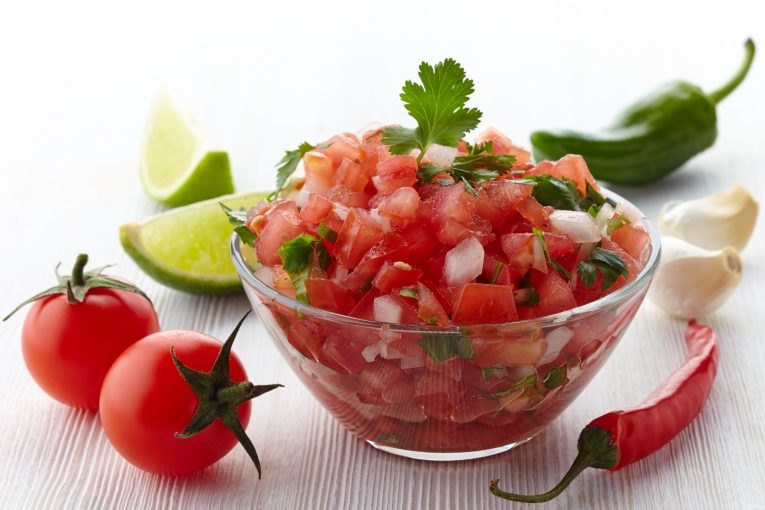There’s almost nothing better than eating homegrown tomatoes in the summer. In a recent discussion with neighbors at a party, we got onto the topic of salsa — specifically, making your own salsa with the massive tomato harvest. We all know that once tomatoes start rolling in, the main challenge is figuring out what in the world to do with the robust volume of them. Salsa is a great way to preserve your harvest. Here’s what you need:
1. Tomatoes
Duh. But think about the varieties. Many people plant cherry tomatoes and then slicing tomatoes in combination. Consider adding a third option to your planting — paste tomatoes. Paste tomatoes can add a lot to salsa.
2. Onions
White onions tend to be the most popular for salsa, but you can also use sweet yellow, and even red. Again, this is a personal choice — and it’s fun to experiment with growing and using different varieties in your salsa.
3. Chili Peppers
Sweet bell peppers will make a more mild salsa, while hotter chile peppers will add the heat. Some people even prefer to use banana peppers in a Summer salsa, just for the variation. Bottom line, it’s fun to experiment and try different peppers.
4. Garlic
To have garlic this year, you have to have planted it last Fall. But this ingredient you can easily grab at the grocery if you don’t have it in the back yard.
5. Herbs
The most commonly-used herbs in salsa tend to be basil, oregano, parsley, and cilantro. These all thrive in our Williamson County climate with very little trouble; so much so that I only grow them in containers because they’ll end up everywhere, otherwise.
Once you’ve collected these ingredients, either from your home garden or one of our many area Farmer’s Markets, here’s a great article from Gardening Channel to take you through 10 Easy Steps to Making & Canning Fresh Garden Salsa.
 Williamson County Gardening Resources:
Williamson County Gardening Resources:
Williamson County Master Gardeners Association
Williamson County Extension Office
Williamson County is in USDA Hardiness Zone 7a (0 – 5 degrees)
USDA Plant Hardiness Zone Map



















